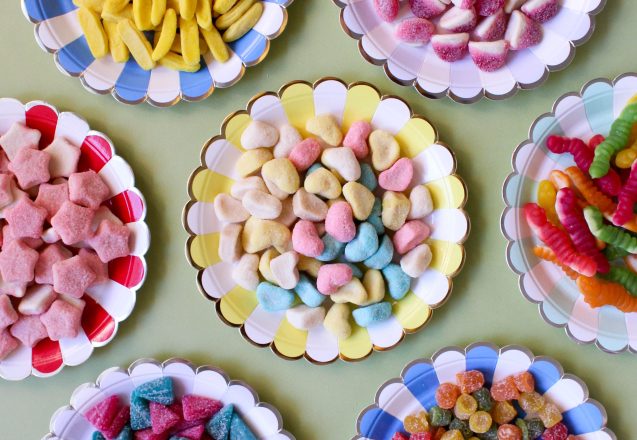How To Balance Weight Loss With Muscle Gain
 If you’re focused on getting in shape but in addition to building muscle, you have to lose weight, you have to be careful or you’ll sabotage your efforts. Undertaking a weight loss program doesn’t necessarily mean you’ll only lose fat. Sometimes, you lose lean muscle mass, too. When you cut calories, you don’t always have the nutrients necessary for muscle gain either. You need to focus on both diet and exercise to achieve weight loss while building or preserving muscle tissue.
If you’re focused on getting in shape but in addition to building muscle, you have to lose weight, you have to be careful or you’ll sabotage your efforts. Undertaking a weight loss program doesn’t necessarily mean you’ll only lose fat. Sometimes, you lose lean muscle mass, too. When you cut calories, you don’t always have the nutrients necessary for muscle gain either. You need to focus on both diet and exercise to achieve weight loss while building or preserving muscle tissue.
Having a great body starts in the kitchen.
Gaining weight occurs when you consume more calories than you burn. To lose weight, you have to burn more calories than you eat. You can’t exercise off a high-calorie diet. You have to cut back on calorie consumption, while ensuring you have adequate protein to build muscle. The amount of protein varies by weight, sex, age, and activity level. In order to build muscle and burn fat, you also need healthy fat in your diet. Eliminating fried food and highly processed carbs is the first step.
Your workout plays an important role.
If you’re trying to build muscle and lose weight by increasing your cardio, it’s a recipe for failure. Cardiovascular workouts torch calories indiscriminately. They burn calories from both fat and lean muscle tissue. That loss of muscle tissue not only defeats your muscle building, but it also slows weight loss, too. Muscle tissue burns more calories than fat tissue does, so the more you have, the higher your metabolism. Increase your strength-building exercises but make sure you provide 48-72 recovery time between sessions. Add HIIT—high intensity interval training—workouts. It’s not a type of exercise, but a way of doing them. It alternates intensity from high intensity to recovery and back.
Don’t starve yourself.
Sure, you want to lose weight, but drastically cutting calories isn’t the answer. Reducing your caloric intake by approximately 500 a day can give you a good start. When you add strength-building and HIIT, you’ll burn more calories. If your workout is intense, increase your calorie allotment slightly. Don’t forget to include pre-workout and post-workout snacks for the best results. The post-workout snack of protein and carbs can help boost recovery and build muscle.
- Don’t get discouraged if you aren’t losing weight faster, especially if you’re building muscle tissue. You may be losing fat and building muscle tissue, which weighs more per cubic inch than fat tissue does.
- Eating carbs earlier in the day can be beneficial. You’ll have adequate time to burn the calories, so you don’t store them as fat. Eating a carb and protein snack an hour before working out can increase your workout efforts and help you burn more calories.
- You may have great muscles, but you won’t see the definition until you lose the extra fat. Keep your eye on your goal. The fat is hiding the muscle tissue you’ve built.
- Find ways to burn extra calories, like taking the stairs instead of the elevator. Staying hydrated also helps you burn more calories and can cut your appetite, too.
For more information, contact us today at LIV Fitness



 Everyone loves something sweet, whether it’s a juicy orange or a sweet treat. The problem with satisfying that craving for sugar with chocolate or other food with added sugar makes it even more difficult to stop overeating sugary delights once you start. That’s because sugar stimulates brain neuroreceptors which opioids also stimulate. It releases the feel-good neurotransmitter dopamine. That reward increases your desire to eat more. It’s similar to using recreational drugs. The more you eat, the more you want.
Everyone loves something sweet, whether it’s a juicy orange or a sweet treat. The problem with satisfying that craving for sugar with chocolate or other food with added sugar makes it even more difficult to stop overeating sugary delights once you start. That’s because sugar stimulates brain neuroreceptors which opioids also stimulate. It releases the feel-good neurotransmitter dopamine. That reward increases your desire to eat more. It’s similar to using recreational drugs. The more you eat, the more you want.
 If you’re like many people in Livermore, CA, you’ve heard the latest scientific discovery linking a genetic factor to the potential of becoming obese. While genetic makeup dramatically affects your future, it doesn’t seal your fate. A predisposition means you must work harder and be more careful with your diet and other lifestyle options. Scientists recently analyzed human genome sections affecting body weight in four hundred thousand people. The people in the top 10% containing those markers were 25 times more likely to become severely obese than those in the bottom 10%.
If you’re like many people in Livermore, CA, you’ve heard the latest scientific discovery linking a genetic factor to the potential of becoming obese. While genetic makeup dramatically affects your future, it doesn’t seal your fate. A predisposition means you must work harder and be more careful with your diet and other lifestyle options. Scientists recently analyzed human genome sections affecting body weight in four hundred thousand people. The people in the top 10% containing those markers were 25 times more likely to become severely obese than those in the bottom 10%.
 Whether you’re on the road for business or a fun family trip, eating healthy food can still be your goal. You don’t have to “junk-food junkie” your way across America. It takes some planning, but with the help of an internet search or a couple of coolers in the trunk, it’s possible to eat healthier. Start by planning your trip before you leave the house. Check the internet for restaurants on your route and visit their website to view what they offer.
Whether you’re on the road for business or a fun family trip, eating healthy food can still be your goal. You don’t have to “junk-food junkie” your way across America. It takes some planning, but with the help of an internet search or a couple of coolers in the trunk, it’s possible to eat healthier. Start by planning your trip before you leave the house. Check the internet for restaurants on your route and visit their website to view what they offer.